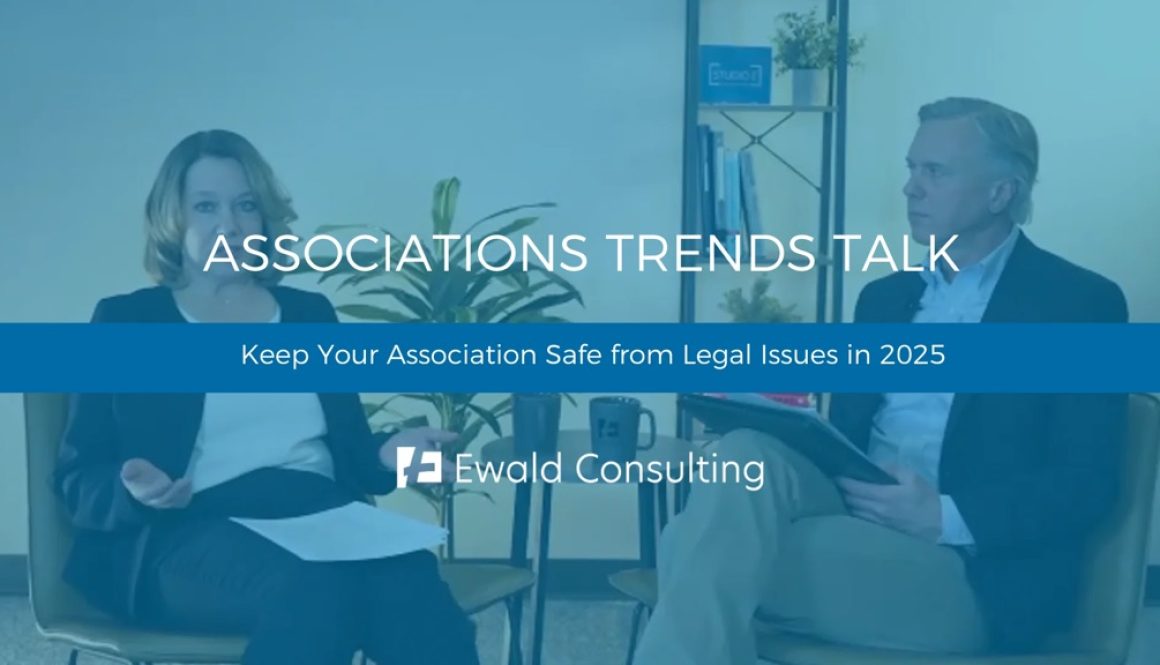|
Legislature Passes State Budget in Special Session
The legislature finally completed the state’s two-year budget early Tuesday morning after a lengthy 21-hour special session. They narrowly avoided the June 30 deadline, which would have resulted in a partial government shutdown. The day progressed smoothly, a nice change of pace from an intense regular session defined by a tied House membership and three special elections.
The 2025 legislative session began with a power struggle in the House after a court ruled that a Democratic member did not meet the residency requirement for his seat, leaving the body with a 67-66 Republican majority. House Democrats denied a quorum by staying away from the Capitol to prevent House Republicans from operating as the majority during the first three weeks of session.
A special election to fill the seat was won by the Democratic candidate, restoring the House to a 67-67 tie. A power-sharing agreement gave the speakership to Rep. Lisa Demuth (R) and required 68 votes to pass legislation. There was also concern that Republicans would not allow Rep. Brad Tabke to take his seat after a close election and a court decision declaring Tabke the winner.
The Senate faced its share of challenges as well, despite an amiable start. Sen. Kari Dziedzic (DFL) sadly passed away in December. The Senate was tied 33-33 and operated under a power-sharing agreement until a special election was held to fill the vacant seat, which DFL candidate Sen. Doron Clark won, restoring the party’s majority to 34-33. Then, in the middle of the session Sen. Justin Eichorn (R) resigned after his arrest for solicitation of a minor. A special election was held to fill the seat, won by Republican Sen. Kari Heintzeman.
In addition to all this uncertainty, the budget forecast for the next biennium showed the state facing a significant budget shortfall. Legislators struggled to agree on how best to address the deficit, and negotiations were made even more difficult given the tie in the House and a slim Democratic majority in the Senate.
After adjourning the regular session on May 19 without a budget deal, the legislature spent three weeks hashing out an agreement on the unresolved budget areas — largely behind closed doors. The new budget spends $66 billion over two years, 8% smaller than the previous $72 billion plan passed in 2023, reflecting the end of federal pandemic aid and a more negative fiscal outlook for the state. Although legislators closed nearly half of the projected long-term deficit, Minnesota is still expected to face a $290 million deficit in the 2028–29 budget cycle. Most of the $283 million in cuts came from the Department of Human Services.
As part of the compromise, Democratic leadership agreed to pass a key Republican priority to repeal MinnesotaCare coverage for undocumented adults, a move strongly opposed by most in their caucus. A $700 million capital investment bonding bill was also passed with bipartisan support. The budget is headed to Gov. Tim Walz’s desk, and he has 14 days to sign or veto the bills.
The legislature’s work may not be finished. Another special session may be required later in the year if Medicaid cuts are passed at the federal level, which would result in an even more dire fiscal situation for the state.
Following is a summary of the key legislation passed this year.
Health Finance Bill (HF 2)
The House Health Committee and the Senate Health and Human Services Committee were tasked with building a biennial budget that included a $97.6 million reduction in FY26-27 and a nearly $298 million reduction for FY28-29. This budget area includes appropriations for the Departments of Health, Human Services, and Children, Youth, and Families, and incorporates the House Children & Families Committee budget.
HF 2 includes funding for several new initiatives, including establishment of a dementia services program, maternal death review and reporting, and creation of a rural emergency medical services uncompensated care pool to help EMS providers receive payment for unreimbursed services. It also includes a training and staffing grant program to support the recruitment and education of emergency medical technicians.
The bill creates a prepared meals grant program, provides regional food bank grants, dedicates funding for Tribal food programs, and establishes a new family supportive housing grant program. Additional investments include opioid overdose prevention education and grants to expand access to opiate antagonists on Tribal College campuses.
HF 2 also includes a number of child welfare and early care investments, such as a one-time appropriation to upgrade the county child welfare case management system. It enhances childcare provider support with grants for installing security cameras and strengthens oversight for maltreatment notices. Additionally, the bill requires social media platforms to include mental health warning labels.
The bill creates or expands several programs to address healthcare workforce & licensing, including establishing a limited licensure for foreign medical graduates and providing a path to full licensure. It also establishes licensure for certified midwives and reduces the fee for speech-language pathology assistant licensure.
Finally, HF 2 establishes the County Administered Rural Medical Assistance (CARMA) Program, which builds on the existing county-based purchasing model for Medical Assistance enrollees in greater Minnesota. CARMA aims to improve care coordination by integrating health care, public health, and social services at the local level to better address health-related social needs.
The Department of Health budget was tied to the passage of HF 1, which repeals MinnesotaCare coverage for undocumented persons. Had HF 1 not passed or if Gov. Walz does not sign the bill, funding for the Department of Health will not be approved.
Human Services Finance Bill (HF 3)
The House and Senate Human Services Committees were tasked with building a biennial budget that included a $270 million reduction in FY26-27 and an $820 million reduction in FY28-29. The omnibus human services policy bill was passed and signed by Gov. Walz on May 23.
Included in the finance bill is funding for the Self-Directed Worker Bargaining agreement, which is the collective bargaining agreement between the state of Minnesota and SEIU-Healthcare for self-directed home care service providers. HF 3 also includes funding for wage increases in nursing homes, funding support for implementing recommendations from the Nursing Home Workforce Standards Board, and a new licensing and oversight system for autism service providers.
To address the budget reductions, HF 3 includes a cap on inflation adjustments for long-term care waivers at the consumer price index or 4%. It also adjusts nursing facility payment formulas to reduce automatic inflation indexing, places tighter restrictions on what Medical Assistance covers for day and unit-based services and reduces pay for overnight supervisory caretakers when they are not awake.
Additionally, the bill establishes an advisory task force to advise the legislature and governor on ways to reduce cost growth in long-term services.
MinnesotaCare Eligibility (HF 1)
HF 1 was a compromise stand-alone bill agreed to by legislative leaders. In the House, Speaker Emerita Melissa Hortman was the only DFL vote in favor of the bill, which passed 68-65. In the Senate, Senate Majority Leader Erin Murphy and Senators Hauschild, Kupec, and Rest voted in favor, which passed 37-30. No Republicans voted against HF 1.
MinnesotaCare provides subsidized health insurance to low-income individuals. Legislation passed in 2023 authorized eligibility for undocumented persons, adults over the age of 18 years old and children under the age of 18 years old; it took effect Jan. 1, 2025.
HF 1 limits undocumented persons’ eligibility for MinnesotaCare to those 18 years old or older to the number of people already enrolled in MinnesotaCare as of the effective date of HF 1 (the day after the governor signs the bill into law) AND provides that as of Jan. 1, 2026, undocumented persons over the age of 18 are not eligible for MinnesotaCare. MinnesotaCare eligibility for undocumented persons under the age of 18 years is maintained in HF 1.
Education Finance (HF 5)
The Education Finance Committee was tasked with crafting a biennial budget that incorporated a $420 million reduction for FY28-29, while still responding to immediate fiscal pressures facing school districts. HF 5 meets the $420 million reduction target but does so by trimming a few areas of the education budget. Most notably, the bill reduces reimbursement for special education transportation and establishes a Blue-Ribbon Commission charged with identifying $250 million in cost-saving strategies within special education.
To offset some immediate challenges, HF 5 includes a $50 million appropriation for compensatory revenue, which supports targeted services for students from low-income families. Most importantly, the bill protects the K-12 general education per-pupil funding formula, the core funding stream for school districts, from any cuts — marking a significant policy choice amid broader reductions.
Jobs/Labor Bill (SF 17)
The recently passed Jobs and Labor bill made several changes for businesses and local governments, focusing on workplace policies that impact both employers and employees.
One of the changes involves the Paid Leave Law. In a move aimed at easing costs for employers, the bill lowers the maximum annual premium rate that can be charged by the paid leave program. Previously set at 1.2 percent of taxable wages, this rate will now be capped at 1.1 percent, offering a modest reduction in payroll expenses for businesses.
The bill also makes two changes to the Earned Safe and Sick Time (ESST) law. First, employers now have a bit more flexibility when it comes to verifying an employee’s need for ESST. Specifically, employers can request reasonable documentation after two consecutive scheduled work days of ESST use, rather than the previous threshold of three days. Additionally, the bill clarifies how ESST hours are allocated for part-time employees and those who join a company mid-year.
Transportation Finance (HF 14)
The Omnibus Transportation bill (HF 14) provides $9.88 billion in transportation funding over the next biennium and includes $115 million in general fund transportation cuts agreed to by legislative leaders and the governor. Most of the reductions in the bill will be to public transportation in both the metro and Greater Minnesota as well as a temporary reduction in future proceeds from the sales tax on auto parts that were to be dedicated to transportation.
The bill authorizes funding for $454.09 million for state road construction and $650 million to rebuild Duluth’s Blatnik Bridge.
Policy changes include increasing the annual Electric Vehicle fee to a minimum of $150 and $75 for plug-in hybrid vehicles as well as establishing a new per-kilowatt hour charge at public electric vehicle charging stations.
The bill did not include a delay in the measurement of greenhouse gas emissions in transportation projects or a proposal brought forward late in the legislative process to shift half of the funds ($93 million) that counties would collect from a metro-wide sales tax toward the Metropolitan Council to build out Metro Transit’s bus rapid transit lines.
Capital Investment/Bonding Bills (HF 17 and HF 18)
HF 17 provides $6.5 million in general fund (cash) funding for a variety of projects such as funding for law enforcement emergency entry device grants at schools, replacing a statue located in the U.S. Capitol of Henry Mower Rice with a statue of Hubert H. Humphrey, and the public safety officer hearing protection program. The bill passed the House 96-34 and the Senate 37-30.
HF 18 provides approximately $700 million in bonding funds for projects with a strong focus on transportation and water infrastructure funding. The bill passed the House 116-15 and the Senate 57-10 with significant bipartisan support.
The House (93-39) and the Senate (34-33) passed an omnibus tax bill which increases state revenue by $118 million, mainly through a combination of the increased cannabis gross receipts tax, eliminating a tax exemption for electricity use by data centers, and repealing local government cannabis aid.
The bill includes tax breaks for research and development and makes changes to a handful of city Tax Increment Finance districts.
The bill does not contain cuts in County Program Aid and Local Government Aid to cities and counties that were originally contained in the Senate regular session tax bill.
A governor’s initiative to expand sales taxes to financial services (including accounting services) is not in HF 9.
State Government Finance/Elections (SF 3045)
Legislation providing $1.35 billion to fund state government agencies passed the House (116-18) and Senate (36-31) during the regular session of the legislature. SF 3045 increases funding to the operations of agencies for the 2026-27 biennium by $46.5 million. The bill also contains numerous oversight provisions to identify and prevent fraud and abuse in the state and provides greater oversight into the state government through the Office of the Legislative Auditor.
SF 3045 also contains numerous election administration provisions such as requiring absentee voter applicants to provide both a Minnesota driver’s license or state identification card number and the last four digits of their Social Security number to verify their identity, requiring mailed and online absentee ballot applications to be received at least five days before an election and requiring counties to formalize a chain of custody plan for handling election-related materials, and establishing an absentee ballot delivery deadline of 5:00 p.m. on election day.
|


